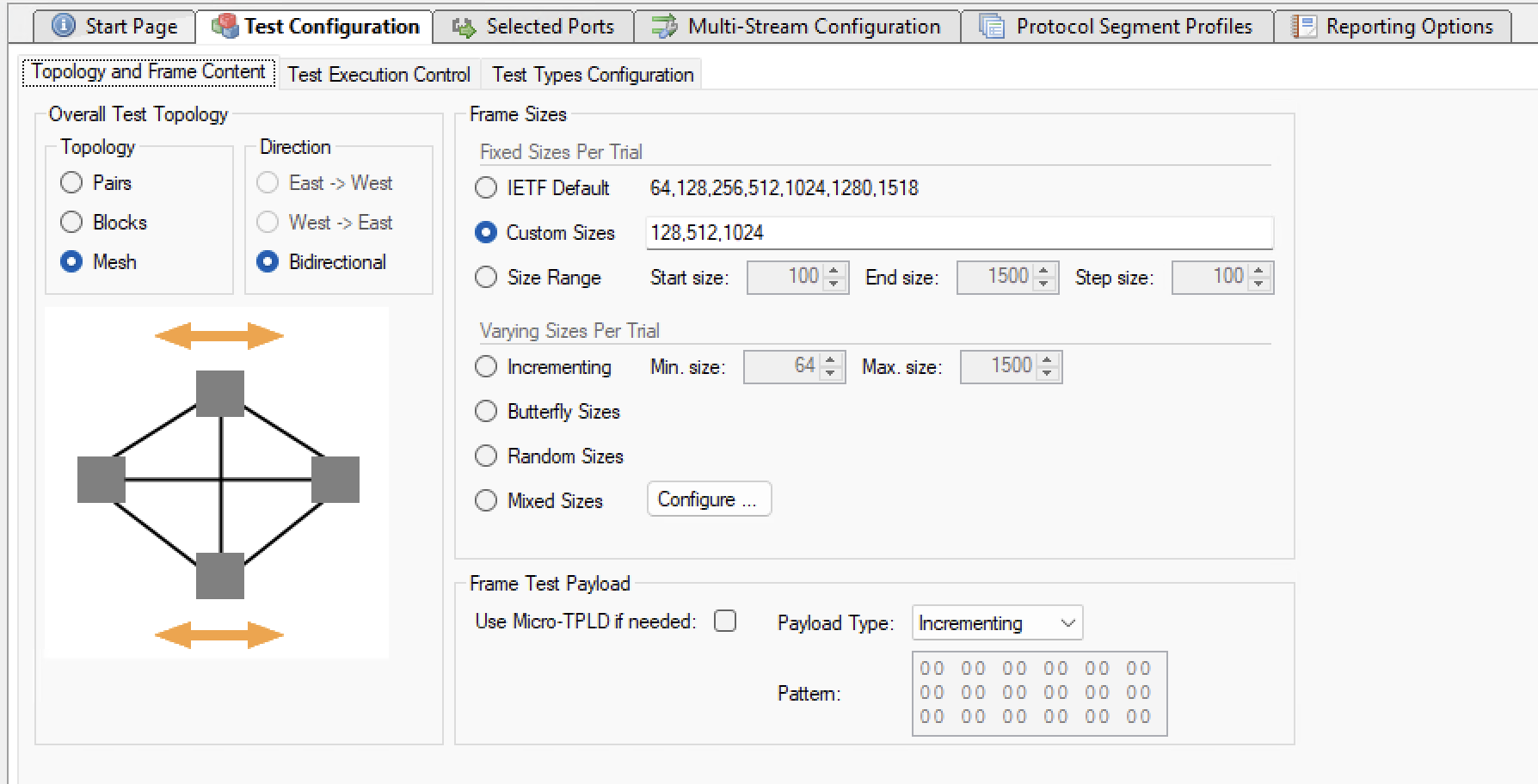Topology and Frame Content

Fig. 19 Test configuration panel
Test Topology
These properties define the topology and direction of the test traffic:
Pairs: Each test port is placed in either the East or the West block. Then the ports are paired together two and two. Traffic is only flowing between paired ports. The Direction option determines which ports will be transmitting.
Blocks: Each test port is placed in either the East or the West block. Every port in the transmitting block sends traffic to every port in the other block. The Direction option determines if only one block or both will be transmitting.
Mesh: All test ports send traffic to all other test ports. The Direction option is ignored as Mesh traffic is always bidirectional.
Frame Sizes
This section allow you to specify the frame sizes to be used by the various tests. The available frame size options are divided into two groups, the Fixed Sizes Per Trial and the Varying Sizes Per Trial.
As the name indicates the Fixed Sizes Per Trial group uses a single frame size per trial. It is possible to specify multiple frame sizes which will cause the test to be repeated for each frame size.
The Varying Sizes Per Trial group will use many frame sizes for each trial. This is controlled by the hardware. Note that when calculating bit rates the average frame size will be used.
Frame Test Payload
The normal Xena test payload (TPLD) section takes up 20 bytes and is used for various purposes, such as latency measurements, loss and misordering monitoring, payload integrity, etc. Due to this test payload it may be impossible to make room for protocol headers such as IPv4+UDP for smaller frame sizes (e.g. ~64 byte).
By enabling the Use Micro-TPLD if needed option you permit Xena2544 to use the smaller micro-TPLD if needed by the current frame size. The consequence of this will be that realtime monitoring of packet loss is no longer possible.
Note
Note that Xena2544 will only use the micro-TPLD for a test run if the current frame size requires it. If you for instance use the default IEEE packet size distribution you may encounter that the micro-TPLD is only used for 64 byte packets but not for the other packet sizes.
The Payload Type property defines the type of test payload in the frames generated by the test ports. If the payload type is set to “Pattern” you can specify the pattern in the Pattern field.